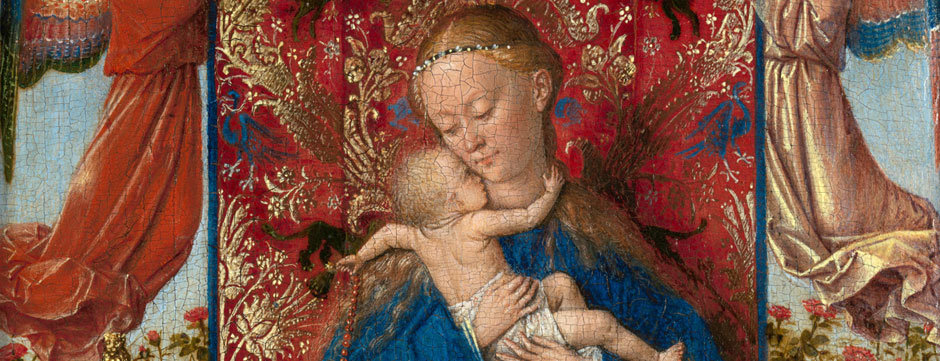
Kunsthistorisches Museum Vienna
10 July 2019 to 20 October 2019
The
exhibition presents three of the circa twenty extant works by Jan van
Eyck, offering a glimpse of the art produced during the reign of Duke
Philipp the Good, when the Burgundian Low Countries witnessed a unique
flowering of courtly and urban civilisation.
Jan
van Eyck (c.1390-1441), the favourite court painter of Philipp the
Good, duke of Burgundy (1396-1467), is celebrated for his virtuosity in
the use of oil paint and his skill in combining naturalism and realism
with brilliant colours. Already regarded as an epoch-making artist by
his contemporaries, he was soon renowned throughout Europe as the
founder of Early Netherlandish painting.
Jan van
Eyck was one of the first artists north of the Alps to sign and date
his works. His use of a motto is remarkable. In the early fifteenth
century, it was highly unusual for a painter – then still regarded as a
mere craftsman – to have his own device, something reserved for the
dukes of Burgundy and the nobility. Jan van Eyck chose AΛΣ · IXH · XAN
as his motto and generally inscribed it in pseudo-Greek letters; it is,
however, in Dutch and means “as I can” or “as best I can” as in “as best
I can, not as I would”, which is presumably meant to imply the artist’s
modest appreciation of his own work.
Jan van Eyck produced his Madonna at the Fountain
in 1439, two years before his death. His virtuoso handling, the
brilliance of his colours in the newly-perfected medium of oil painting,
and his subtle brushstrokes turn this devotional picture into a perfect
masterpiece.
This exceptional loan from the
Royal Museum of Fine Arts in Antwerp engendered this exhibition, in
which the two panels by Jan van Eyck are juxtaposed with the highlights
of the Kunsthistorisches Museum Vienna’s collection of Early
Netherlandish painting.
Also on show is the
Chasuble from the vestments of the Order of the Golden Fleece, the
influential order of chivalry founded by Philipp the Good in 1430.
Normally displayed in the Imperial Treasury, it represents the exquisite
textile arts that played such a seminal role in the legendary splendour
of the court of the dukes of Burgundy. This uniquely sumptuous
liturgical vestment is couched and embroidery all over in gold and
coloured silk threads, making it many times more expensive than
paintings.
The Kunsthistorisches Museum
Vienna’s exhibition was organised in collaboration with Flanders
(www.flanders.at), which will honour this great Early Netherlandish
master in 2020 by organising a number of exhibitions and events in
Ghent.